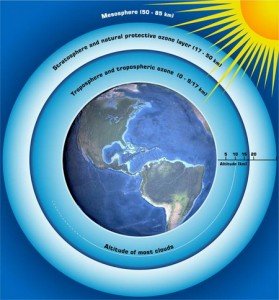Nitrous oxide, which comes from natural and man-made sources, is the most damaging of greenhouse gases according to scientists who have been modeling the impact of the gas on the ozone layer and on the climate.
 The agricultural sector is a major producer of nitrous oxide and extensive research is underway in New Zealand under the banner of the Pastoral Greenhouse Gas Research Consortium to develop ways of reducing N2O emissions.
The agricultural sector is a major producer of nitrous oxide and extensive research is underway in New Zealand under the banner of the Pastoral Greenhouse Gas Research Consortium to develop ways of reducing N2O emissions.
Last week it was revealed that New Zealand will also take a leading role in a global research alliance which will be tasked with reducing agricultural emissions.
The authors of the research published today in Science suggest that limiting N2O emissions will not only speed-up recovery of the Earth’s ozone layer, but will help efforts to combat climate change. They point out that nitrous oxide is not covered by the Montreal Protocol, which has seen countries band together successfully to cut use of ozone-depleting substances like chlorofluorocarbons (CFCs).
Registered journalists can log into the SMC Resource Library to access the research.
Scientists Dr Paul Johnston, Dr Greg Bodeker, Dr Richard McKenzie, and Dr Olaf Morgenstern, all of NIWA’s atmospheric research site at Lauder in Central Otago, comment:
“This paper presents the first calculations of ODP for nitrous oxide, N2O. (ODP = Ozone Depletion Potential – the amount of stratospheric ozone destroyed per unit mass of a chemical relative to that destroyed by CFC 11).
“The authors calculate that if anthropogenic N2O increases continue at current rates, by 2050 they would cause ozone depletion in excess of 30% of that produced by CFCs at the peak loss in 1987 due to CFCs. (N2O emissions are a byproduct of fertilizer use in agricultural, combustion, industrial process, etc.) In the 1990s the average anthropogenic emissions were estimated to be nearly 40% of the total emissions. The authors conclude that a reduction in N2O emissions would benefit the ozone layer, as well as benefiting climate due to the greenhouse effect of N2O.
“Because the ozone loss due to N2O is challenging to model and varies with CFC levels, which are currently declining, and N2O levels which are currently increasing, it is important that future predictions to 2100 be as accurate as possible. New Zealand scientists at NIWA’s station at Lauder in Central Otago have been measuring stratospheric nitrogen dioxide, NO2, since 1981 using ground based spectrometers and this will continue. These data have been used to improve coupled chemistry climate models that are used by NIWA atmospheric modelers on the NIWA supercomputer, to address this need. (nitrogen dioxide is a product of the breakup of N2O by sunlight in the stratosphere and a key molecule in the catalytic destruction of ozone.)
“NIWA is therefore making a contribution to the international effort to improve ozone and climate change predictions through this century. This work is funded by the Foundation for Research, Science and Technology and contributes to NZ meeting its obligations under the Kyoto Protocol – Article 10.
“Historical Perspective: N2O has been recognized as an important agent in depleting ozone for a considerable period of time; its exclusion from the Montreal Protocol is due to the fact that most of it is of biogenic origin; this also explains why its ODP has not previously been assessed.
“However, its present growth is clearly driven by anthropogenic activities, so we think the authors are right in pointing out that N2O is now the most important anthropogenic ozone-depleting substance, even more so as chlorine levels are falling. Therefore the authors are filling an important gap in calculating the ODP of N2O. From a policy perspective, mitigating N2O emissions would be of considerable benefit both to ozone recovery and to protecting global climate.”